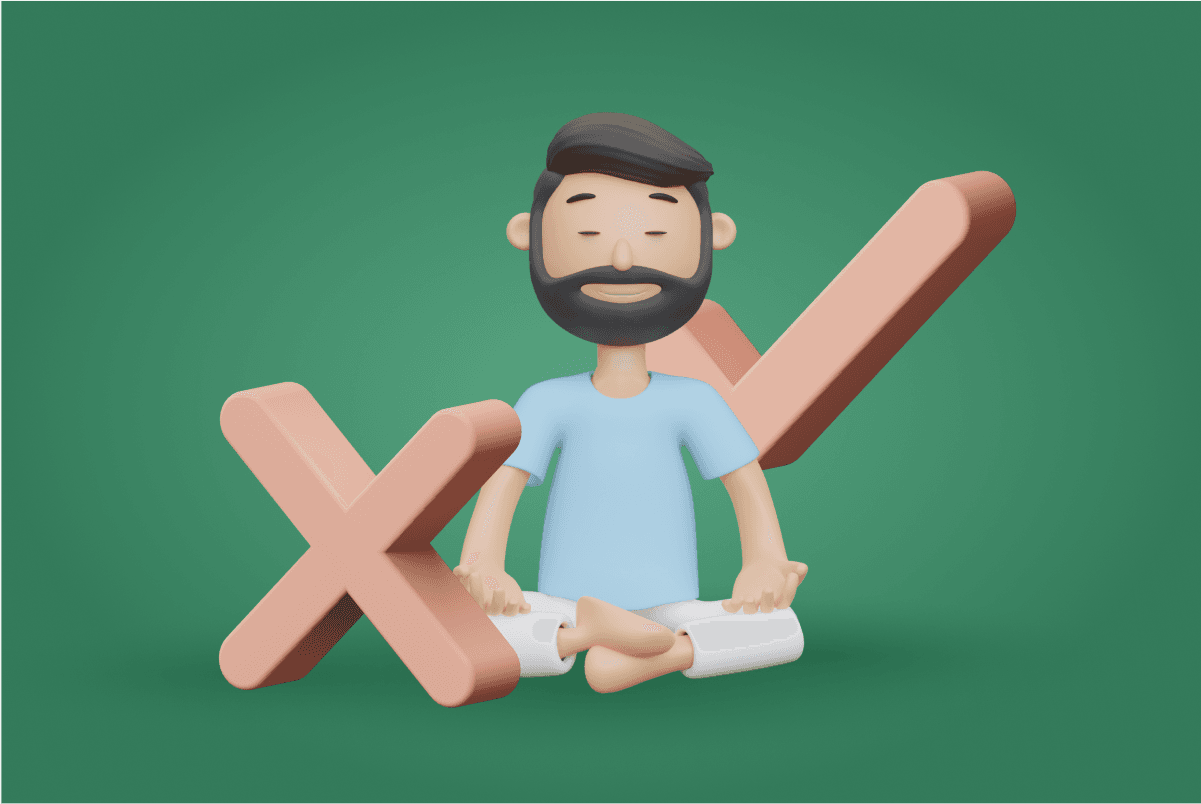The Art Of Taking A Break
If you feel overwhelmed or stressed with the pressures of your work, circumstances in your personal life or the ever-changing world, prioritising your mental health is a great way to work towards staying calm and energised. Today, many individuals across the world are using meditation as a way to prioritise their mental health and wellbeing.
Practicing meditation can help reduce stress levels and achieve a state of relaxation. In addition, meditative practises can lead to a reduction in psychological distress such as anxiety, depression, and stress.
Anyone can engage in the practice of meditation, it is a universal exercise and there is no right or wrong way to do it. Starting a meditative practice can feel quite daunting, however, the benefits far outweigh any concern, as studies have shown it helps to calm your mind, regulate your breathing and enhance focus.
In this week’s guest blog post, contributor Emma Wilson shares several ways to get started with your own meditation practice.
Start early
If you are new to practising meditation, to start with try choosing a regular time to meditate and sticking to this as much as is possible. When you schedule a time to meditate, it can feel easier to establish the habit, although it’s important not to put pressure on yourself if you’re not able to return to it at the exact same time each day - it’s a practice to cultivate after all, and to find your own rhythm is important.
Choose a time to meditate and approach the practice with curiosity, like training the body and mind to transit into meditation at a similar regular time. Remember to go into your meditation practice with an open heart and mind, and avoid setting unrealistic expectations. It takes effort and time to reap the benefits of meditating.
Get comfortable
Create a designated space where it is comfortable for you to meditate. It’s not about where or how to sit; it’s most important to focus on getting comfortable as a priority. You can sit in any position that is comfortable and allows you to feel settled.
Choosing the a designated space for you to meditate can help you to train the body and mind to feel ready for your practice each time.
Begin your practice with a few conscious breaths
There are many ways you can use conscious breathing to support your mental health, improve your focus and enhance a sense of tranquility.
Start by following your breath sensation as it slowly inhales and exhales. Take a few deep breaths and let each one release slowly; just 3-5 minutes is more than enough to feel the benefits, or even less if your time is restricted.
Meditation is like exercising the mind; begin with a gentle exercise and slowly work up to a lengthier session.
Choose a motto
While you don’t need a motto to meditate, it can be a helpful tool to help your mind stay focused. Using a motto can help to anchor your mind during meditation and manage your thoughts from wandering off.
Once you’ve created your mantra, try to repeat it during each of your sessions. Mantra meditation allows you to gain a sense of control over your thoughts and feelings, and helps to set intentions. A couple of examples of your mantra could be:
“I am choosing to be present, and appreciate the moment.”
Or…
“I have an immense amount of potential with me; this practice helps me to tap into this potential.”
Remember to regularly breathe through repeating your personal mantra, whatever you choose to come up with.
Be kind to yourself
When meditating, remember to be kind to yourself and avoid pushing too hard. It’s common to feel like you are doing it “wrong” the first time, and consider giving up. Please know that this is natural, and it may take a while to settle into the practice - after all, it’s not often we allow ourselves the time and headspace to get quiet!
Some sessions may feel more difficult to settle than others, and that can be symptomatic of specific circumstances you have going on in your life. You are not obliged to “get it right”, it’s more about settling into a practice that works for you and your lifestyle. A key factor of meditation is to practise patience, perseverance and to give yourself permission to relax.
Evaluate your energy
Long-term consistent meditation can increase your resilience to stress.
During your meditation session, focus on how you are feeling in that moment. For example, if you feel low on energy, assess all the factors that may be associated with that and allow your thoughts to flow, without judgement and with kindness to yourself. If you are struggling with sleep, consider what could be causing this and what you can do to help reduce the problem. You could write a list of things that help to rejuvenate your energy levels and improve your sleep routine when you need, as a helpful prompt.
If you feel your energy level is high, be with that feeling and also take notice of the factors that may be associated with that.
Practice gratitude
You can weave in the beautiful practice of gratitude into your meditation by thinking about all the things you are grateful for in your life in that present moment.
If you’re having a difficult day and are struggling with this, consider the beauty in the world, time you’ve recently spent with a loved one, a compliment you may have received, and acknowledgement of your hard work, to name a few. Practising gratitude can help to calm your mind, relieve tension and boost your mood.
Discover different breathing techniques
It’s true that we breathe every day, but how we breathe can make a significant difference in terms of how we feel.
Try a few different breathing techniques to explore and take notice of how you feel afterward. Concentrate on heightening all your senses as you see, listen, feel, smell and taste the experience, with each inhale and exhale. Whenever your thoughts wander, gently return your focus to your breathing - it can also help to count your breaths.
Scan your body
The body scan is a very popular technique in the practice of meditation.
Take a moment during your practice to focus on each part of your body, one part at a time. For example, start by focusing on your feet, then moving your awareness up to your ankles, through your legs, into your waist, around your chest and back, through your arms, up your neck into your head, to the top of your head. Examine how each part of your body feels, if you notice any tension breathe into that space/those spaces and visualise the tension easing, and relaxing. You can scan your body by lying down, sitting or standing, and for as long as you’d like.
Acknowledge your emotions
Meditation can bring up both positive and challenging emotions, so it is important to take notice and recognise whatever comes up without judgement, and with kindness and curiosity. Consider how your mind and body are feeling, and if you notice any resistance understand that this is a normal part of being human. If anything arises that you find difficult to manage, think about who you can speak to that you trust or consider journaling your thoughts, as an outlet of self-expression. Remember to be kind to yourself, and remind yourself that you’re doing the best you can as everyone is different.
Consider guided meditation to help you start your journey
Guide meditation can help you to settle into the practice and center your thoughts, allowing you to connect to a heightened sense of peace, focus, and appreciation of everyday life. Creating the space for meditation can also improve mental and emotional health, and enable you to enter into a deeper state of relaxation.
Meditation isn’t always easy, and at the same time there is no set way of practising it - you need to find a routine that works for you. If you are just starting out, be sure to take time to reflect between sessions, which can help you to cultivate the habit of taking a step back, assessing your circumstances and exploring how you feel. There are a range of guided meditation apps to help you start your journey as well as Calmer’s range of Mindfulness Guides and Ecourses, where you can enjoy a selection of guided meditations to enhance self-kindness, improve sleep, relieve stress and nurture daily mindfulness.
Remember to take your practice one second at a time, relax, and above all else - enjoy!
Original source: 10 steps to consider while meditating



